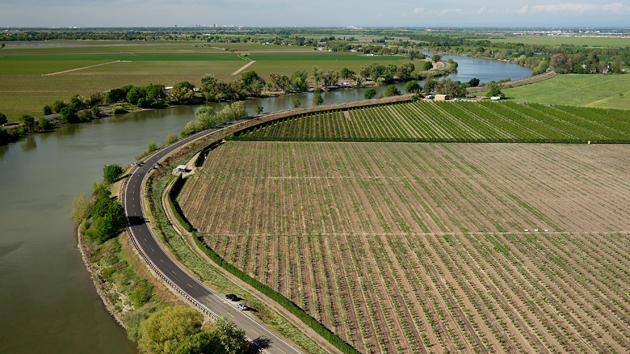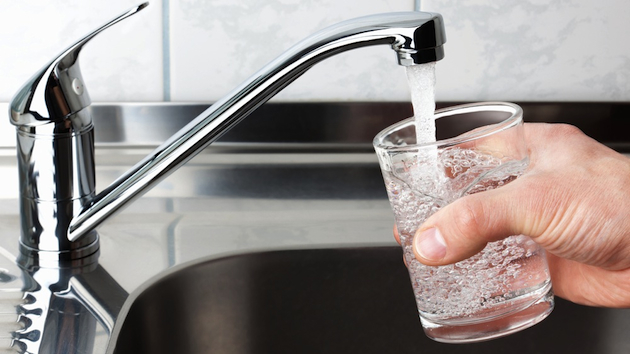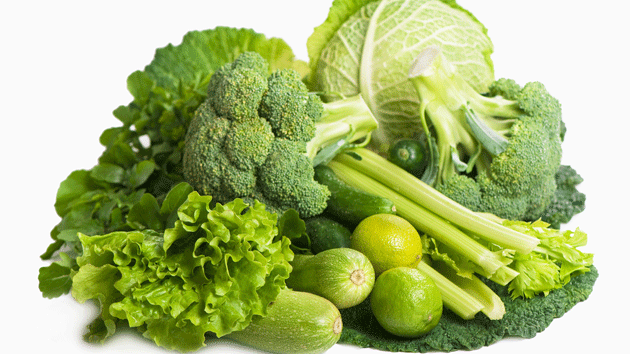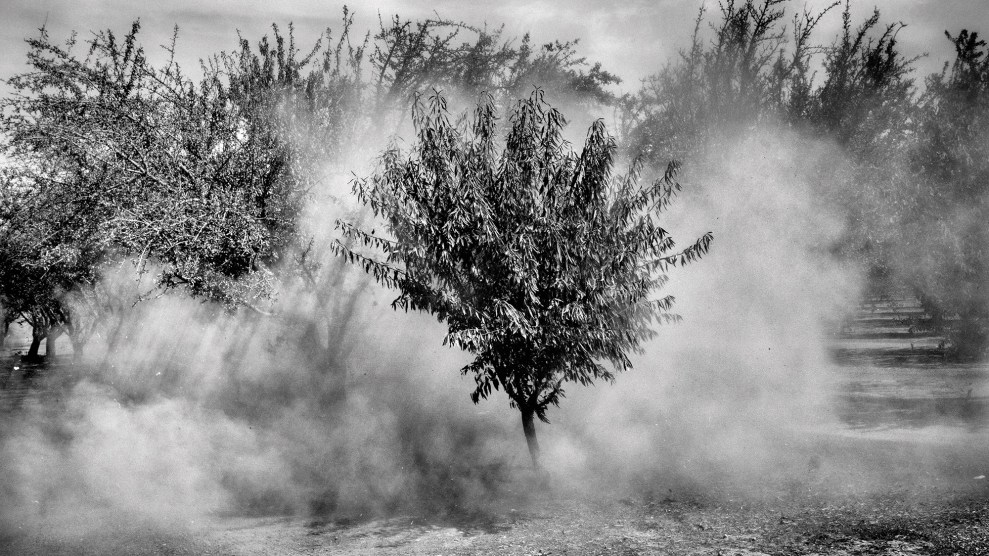
<a href="http://www.shutterstock.com/cat.mhtml?lang=en&language=en&ref_site=photo&search_source=search_form&version=llv1&anyorall=all&safesearch=1&use_local_boost=1&autocomplete_id=&search_tracking_id=X9FZ1ndXe4cK8jZTO7rntQ&searchterm=romaine%20salad&show_color_wheel=1&orient=&commercial_ok=&media_type=images&search_cat=&searchtermx=&photographer_name=&people_gender=&people_age=&people_ethnicity=&people_number=&color=&page=1&inline=128820742" target="_blank">Foodio</a>/Shutterstock
The mighty Central Valley hogs the headlines, but California’s Salinas Valley is an agricultural behemoth, too. A rifle-shaped slice of land jutting between two mountain ranges just south of Monterey Bay off the state’s central coast, it’s home to farms that churn out nearly two-thirds of the salad greens and half of the broccoli grown in the United States. Its leafy-green dominance has earned it the nickname “the salad bowl of the world.” And while the Central Valley’s farm economy reels under the strain of drought—it’s expected to sustain close to $2.7 billion worth of drought-related losses—Salinas farms are operating on all cylinders, reports the San Jose Mercury News.
What gives? It all comes down to water sources. In normal years, Central Valley farmers draw more than half of their water from the vast, publicly funded irrigation projects that carry snow melt from the Sierra Nevada mountain range, with underground aquifers providing the rest. With the Sierra Nevada water essentially gone—snows have been minuscule the past four winters—the region’s farmers have been scrambling to tap as much underground water as possible. But they can’t make up for the massive shortfall, so they’re fallowing large tracts of land (not almonds and pistachios, though—they keep expanding) and laying off thousands of farm workers.
Meanwhile, farmers in the Salinas Valley rely nearly 100 percent on underground aquifers, drought or no. And that means “the drought’s a marvelous time to grow stuff, if you have the water under full control, because you can take advantage of predictable weather and strong prices,” Richard Howitt, ag economist at UC Davis, tells the Mercury News. (Prices are strong because drought-stricken farms in the Central Valley have cut back on production of non-permanent crops, reducing supply.)
But all isn’t well under those fields teeming with ripe vegetables and hustling farm workers. For one thing, decades of heavy nitrogen-fertilizer use has left underground water widely contaminated with high levels of nitrate, which isn’t good for the people who rely on it for drinking water, because nitrate can reduce the blood’s ability to carry oxygen and has been linked to elevated rates of birth defects and cancers of the ovaries and thyroid. A US Geological Survey spreadsheet (pdf version)—part of a recent USGS study of California’s water quality I wrote about here—shows that 20 percent of the region’s wells (see row “SCR-Salinas”) have over-the-legal–limit nitrate levels.
Worse, the region’s aquifers, the lifeblood of its $8.2 billion ag economy and sole source of drinking water, are in a “state of long-term overdraft,” a 2014 assessment from the California Water Foundation found. The paper notes that when the California Department of Water Resources released its ranking of the state’s aquifers based on those that are under the most stress, all eight of the Salinas Valley’s aquifers made the list of most-stressed basins. And the state’s number-one most-stressed aquifer of all doesn’t lie under some vast, arid pistachio grove in the southern Central Valley; rather, it’s the Salinas’ East Side Aquifer.
The problem isn’t just that the area’s farms—which account for 90 percent of its water use—are sucking out billions of gallons more water from aquifers every year than is naturally replenished, as this 2014 report prepared for Monterey County found. It’s also that as the freshwater vanishes and dips below sea level, seawater from the coast seeps in to take its place—not good, because crops don’t grow well in salty water.
So, while the drought has so far caused few immediate problems for Salinas Valley farmers, they’re standing over a ticking time bomb—and so are the consumers who rely on them for salad greens and other fruits and veggies: that is to say, Americans. “The irony is that in the short run, the Central Coast farmers are better off,” UC-Davis ag economist Howitt told the Mercury News. “But in the long run they’ve got to get their [water] credit card under control.”
















